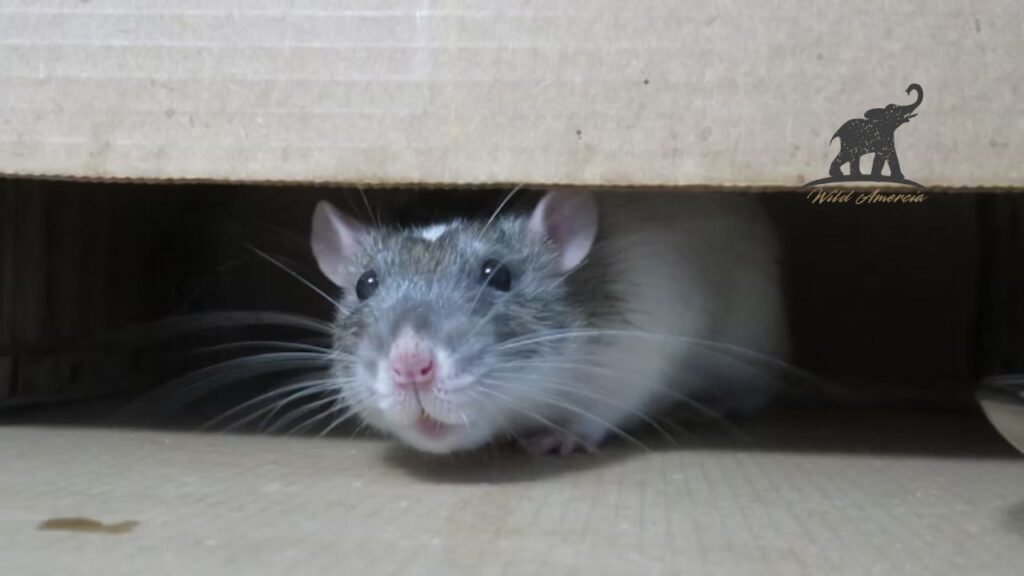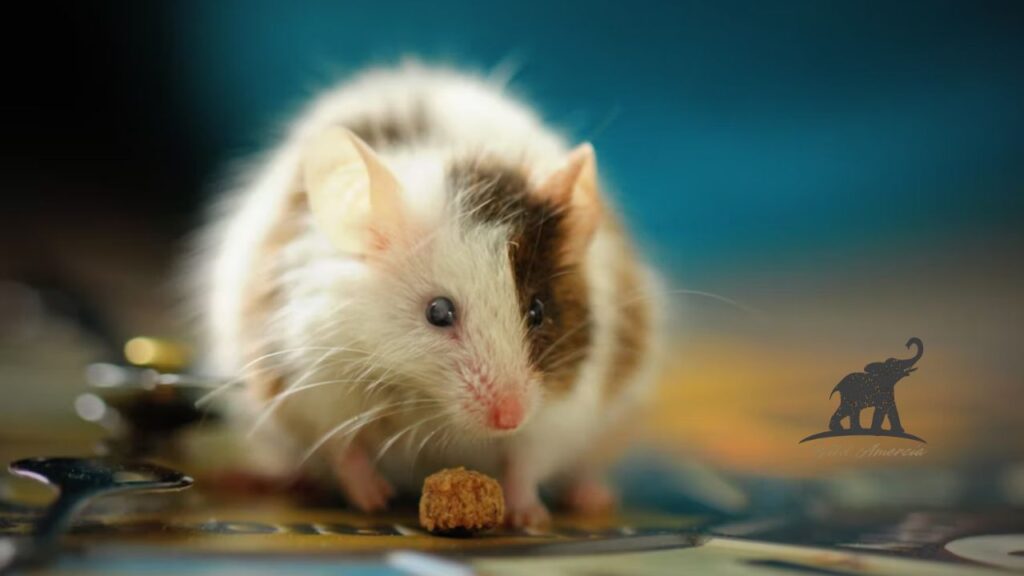Discovering signs of rats or mice in your home can be incredibly unsettling. From gnawed wires to contaminated food, these unwelcome guests pose serious risks to both your property and health. Effective pest control often requires using a quality rodent bait, a crucial tool for eliminating infestations quickly and efficiently.
This guide will walk you through everything you need to know about choosing and using rodent bait safely. We’ll explore different types, highlight top products, and explain the importance of bait stations for a successful outcome. You’ll gain the confidence to tackle your rodent problem head-on.
Quick Guide to Rodent Bait Options
| Bait Type | Best For | Effectiveness | User Rating (Avg.) |
| Blocks/Blox | All-weather, long-term use in bait stations. | High | 4.5 / 5 |
| Soft Bait | Highly palatable, quick acceptance, good for picky rodents. | Very High | 4.7 / 5 |
| Pellets | Mimics natural food sources, good for burrow applications. | Moderate-High | 4.2 / 5 |
| Non-Toxic | Pet/child-safe areas, monitoring activity. | Low (for killing) | 3.9 / 5 |
What Is Rodent Bait and How Does It Work?
So, what is rodent bait? In simple terms, it’s a specially formulated food source mixed with a poison (rodenticide). The rodent bait meaning is straightforward: to attract rodents and deliver a lethal dose. The food component is designed to be irresistible, encouraging them to consume a sufficient amount.

Once ingested, the active ingredient in the poison rodent bait goes to work. Most common rodenticides are anticoagulants. These chemicals prevent the rodent’s blood from clotting, leading to internal bleeding. Other types, like those containing bromethalin or cholecalciferol, target the nervous system or disrupt calcium levels. The result is the same: the elimination of the pest, typically within a few days. This delayed effect is strategic; it prevents other rodents from becoming suspicious of the bait source, a phenomenon known as bait shyness.
A Breakdown of Rodent Bait Types
Not all rodents bait is created equal. The form it takes can significantly impact its effectiveness in different situations. Understanding the options helps you select the best product for your specific problem.

Rodent Bait Blocks
Perhaps the most common type, rodent bait blocks (or blox) are weather-resistant and designed for security. These solid blocks, like Contrac Blox Rodent Bait or Final Blox Rodent Bait, have a hole in the center. This allows you to secure them on rods inside a tamper-resistant rodent bait station, preventing rodents from carrying them away.
- Pros: Durable, weather-resistant, easy to secure.
- Cons: May be less appealing than other forms to picky eaters.
Products like Bell Final Blox Rodent Bait Poison and the popular Tomcat 4 lb. Bromethalin Rodent Bait Chunx are trusted examples. You can often find a good block bait rodent killer at stores like Home Depot.
Soft Rodent Bait
Considered highly palatable, soft rodent bait often comes in small pouches. This rodent soft bait is made with food-grade ingredients and oils, making it incredibly attractive to rodents, even when other food sources are available. Brands like First Strike Rodent Bait and Takedown Rodent Bait are leaders in this category.
- Pros: Extremely attractive to rodents, works quickly.
- Cons: Less weather-resistant than blocks, can be messier.
According to First Strike Rodent Bait reviews, its high acceptance rate makes it a go-to for tough infestations. This is the best bait for rodents that have ignored other options.
Pellet Baits
Rodent bait pellets resemble the seeds and grains that make up a rodent’s natural diet. This familiarity makes them an effective choice. You can use products like PCQ Pelleted Rodent Bait or Prozap Zinc Phosphide Rodent Oat Bait for burrow baiting or scattering in areas inaccessible to non-target animals.
- Pros: Mimics natural food, easy to use in specific applications.
- Cons: Can be easily scattered, posing a risk if not contained.
Brands like Ramik Rodent Bait offer reliable pellet options.
How to Use Rodent Bait Effectively and Safely
Simply placing rodent bait poison around your property isn’t enough; strategic placement and safety are paramount.
- Inspect: Identify areas with high rodent activity. Look for droppings, gnaw marks, and greasy rub marks along walls. These are the “runways” where you should focus your efforts.
- Choose Your Bait: Select a bait type based on your inspection. For outdoor or damp areas, use weather-resistant rodent bait blocks. For a stubborn indoor infestation, a highly attractive soft bait might be better.
- Use Bait Stations: Always place bait inside a rodent bait station. This is non-negotiable for safety. A rodent bait box protects the bait from weather and, more importantly, prevents access by children, pets, and non-target wildlife.
- Placement: How far apart should rodent bait stations be placed? A good rule of thumb is every 15 to 30 feet for rats and every 8 to 12 feet for mice. Place them flush against walls where rodents travel. Exterior rodent bait station placement is crucial for creating a perimeter of defense.
- Monitor and Refill: Check the stations every few days initially. If the bait is gone, replenish it. Consistent availability is key to controlling the population. Use a tool like a 4 way universal rodent bait station replacement key to easily open stations.
Top Rodent Bait Products on the Market
With so many choices, it can be tough to decide. Here are a few standout products with strong user feedback.
Selontra Rodent Bait
Selontra Rodent Bait from BASF is a game-changer. It uses cholecalciferol, a non-anticoagulant active ingredient. Selontra rodent bait reviews praise its effectiveness, noting that it can control even anticoagulant-resistant populations. It’s a faster-acting formula that causes rodents to stop feeding sooner, saving you bait.
- User Review: “After trying everything, Selontra Rodent Bait finally got our warehouse infestation under control. The rodents stopped feeding within days. Highly recommend!” – 5/5 Stars
First Strike Rodent Bait
Manufactured by Liphatech, First Strike Soft Rodent Bait is renowned for its high palatability. It’s a top choice for professionals dealing with picky rodents.
- User Review: “This stuff is amazing. The mice ignored the blocks but went straight for the Firststrike Rodent Bait. Problem solved in a week.” – 4.8/5 Stars
Tomcat Rodent Bait
Tomcat Rodent Bait is a household name for a reason. From the potent Tomcat Bromethalin Rodent Meal Bait to their reliable Tomcat Outpost Rodent Bait Station, they offer a full range of solutions.
- User Review: “The Tomcat Rodent Bait Station is sturdy and easy to use. Paired with their bait chunx, it cleared out the mice in my garage.” – 4.6/5 Stars
Other notable brands include Contrac Rodent Bait, Final Rodent Bait, and Havoc Rodent Bait.
Why Rodent Bait Stations Are Essential
You can’t talk about rodent bait without discussing rodent bait stations. These devices are critical for any successful and responsible baiting program. So, how do rodent bait stations work?
A rodent bait station is a lockable enclosure designed to hold rodent baits. Rodents enter through small holes, feed on the bait inside, and leave. The primary purpose is to keep the poison contained.
Key Benefits of Bait Stations:
- Safety: They are tamper-resistant rodent bait stations, keeping the poison away from curious children and pets. This is why many are called pet friendly rodent bait solutions—the station provides the safety.
- Protection: They protect the bait from rain, dirt, and moisture, keeping it fresh and effective longer. This is especially important for an outdoor rodent bait station.
- Monitoring: They allow you to easily monitor consumption, helping you understand the level of infestation.
- Security: They prevent rodents from moving the bait to other locations where it could pose a risk.
From the durable Aegis RP Rodent Bait Station to the discreet Rock Rodent Bait Station, there’s a design for every need. The EZ Klean Rodent Bait Station is known for its ease of use.
Safety and Environmental Considerations
Using a powerful rodent killer bait comes with great responsibility. The biggest concern is secondary poisoning—when a predator or scavenger eats a poisoned rodent and becomes sick.
How to Bait Safely:
- Always Use a Station: Never place bait in the open. A secured rodent bait station is your best defense.
- Read the Label: Follow all instructions on the Contrac Rodent Bait label or any other product you use. The label is the law.
- Consider Alternatives: For sensitive areas, you might start with a non-toxic rodent bait like Detex Rodent Bait. This is a monitoring bait that helps you confirm activity before introducing a toxicant.
- Eco-Friendly Options: Look into rodent birth control bait. This rodent contraceptive bait works by sterilizing rodents rather than killing them, offering a long-term, humane population control method.
If you have large wildlife concerns, you may need to know how to keep bears from my rodent bait stations. Using weighted rodent bait stations or securing them to structures can help.
Frequently Asked Questions (FAQs)
How does a rodent bait station work?
It’s a locked box that only rodents can enter. Inside, it holds a rodent bait block or other bait. Rodents go in, eat the bait, and leave. This keeps the poison safely away from pets, kids, and weather.
What is the best bait to use in rodent traps?
For traps (not bait stations), peanut butter is a classic for a reason. Other great options for trap bait include chocolate, bacon bits, or specialized lures like Provoke Rodent Bait. The best bait for rodent traps is often something sticky and aromatic.
Do rodent bait stations attract more rodents?
They don’t magically draw rodents from miles away. They attract rodents that are already on your property. By providing an irresistible food source, they intercept rodents that would otherwise be foraging in your home.
How long does rodent bait take to work?
It depends on the active ingredient. Most anticoagulant baits take 4 to 10 days to be effective. This delay is a good thing, as it prevents other rodents from becoming shy of the bait source.
Is there a pet-safe rodent bait?
While no poison is truly “safe,” using it inside a high-quality, tamper-proof bait box for rodents is the industry standard for protecting pets. Always place stations in areas your pets cannot access.
Taking Back Your Home
Dealing with a rodent infestation is stressful, but you have powerful tools at your disposal. By understanding the different types of rodent bait, using bait stations for rodents correctly, and prioritizing safety, you can effectively eliminate these pests.
Whether you choose a fast-acting product like Selontra Rodent Bait or a trusted classic like Tomcat, a strategic approach is your key to success. For large or persistent infestations, don’t hesitate to contact a professional pest control company. They have the expertise and access to commercial-grade products to solve the problem for good.
Admin Recommendation
Cottonmouth Snakes in North Carolina (NC): Key Facts
The Fascinating World of Arctic Fox Fur












